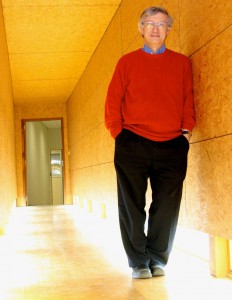Friday, July 12, 13h30 – 15h30 (INRA Champenoux), Conference Room
On July 12, we are pleased to welcome to INRA two renowned researchers in the field of tree ecophysiology; Annie Desrochers of the Univeristy of Québec and Andrew Merchant from the Australian Research Council and the University of Sydney. Both will present their research in the conference room at INRA.
13h30 : Annie Desrochers, professor at the University of Quebec in Abitibi-Témiscamingue, Research Institute of Forests (IRF), The Research and Forestry Development unit of Abitibi-Témiscamingue (URDFAT), will present her work on root links between trees.
Presentation summary:
Trees are traditionally considered as distinct entities competing with each other for resources. However, many tree species in North America are interconnected through their roots, which challenges classic notions of forest ecology and competition. Indeed, root connections allow trees to share water, sugars and secondary compounds. Throughout the years we have excavated the root systems of many tree species (trembling aspen, balsam poplar, jack pine, red pine, black spruce) and found high levels of root grafting or parental root connections for species regenerating through root suckering. We found that responses to defoliation (tree level) or to commercial thinning (stand level) could be affected by root connections. For a clonal species (trembling aspen), we also found that root grafting could be responsible for the conservation of dead genotypes underground, until the next disturbance allows them to come back through root suckering. These examples show us that trees can directly affect the physiology of other trees through root connections, and suggest that stands with trees growing on communal root systems could be considered as single organisms. Hence, root connections are important in forest ecology and should be taken into account in forest management.
Speaker profile : http://chaireafd.uqat.ca/chercheurs/PageIndividus_f.asp?IdCollaboration=25
____________________________________________________________________________
14h15: Andrew Merchant, of the University of Sydney and an Australian Research Council (ARC) Discovery postdoctoral fellow in plant metabolism, while visiting Nancy, will give a presentation called “Transcriptome responses to long term water deficit among eucalypt species of contrasting ecotype”.
Speaker profile : http://sydney.edu.au/agriculture/staff/find_staff_member/staff_profiles/andrew_merchant.shtml
All are welcome!
 Francis Martin, Director of LabEx ARBRE and researcher with the IAM unit, participated recently in a meeting with the President of the Republic and the Ministers in charge of research and ecology. The meeting was entitled “Science, precautionary principles, place of the future”.
Francis Martin, Director of LabEx ARBRE and researcher with the IAM unit, participated recently in a meeting with the President of the Republic and the Ministers in charge of research and ecology. The meeting was entitled “Science, precautionary principles, place of the future”.







